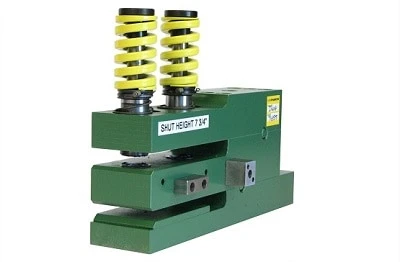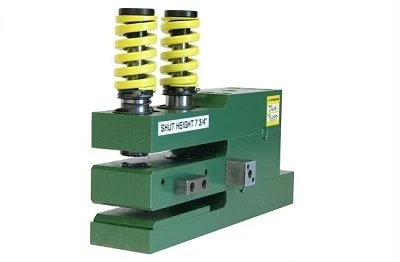Blanking and punching are two major manufacturing processes that are widely used in the manufacturing sector. They are quite popular as they are an integral part of all the manufacturing processes across the world but people often consider them one which is not true.

Let us clarify the difference between them in this article. Let’s start from scratch.
Blanking: It is a manufacturing process in which a flat, geometric shape is formed by putting a coil of sheet metal into a press and die. In this process the blank is punched out from a large metal sheet.
Punching: It is a forming process in which a punch press to force a tool, called a punch, through the work-piece to create a hole via shearing. Punching is applicable to a plethora of materials that come in sheet form, including sheet metal, paper, vulcanized fibre and other forms of plastic sheet.
Let’s talk about the main point that is the difference between these two manufacturing processes.
Differences Between Blanking And Punching
- The outcome of both the processes varies
People consider the final outcome of both the processes as same or slightly different but in reality they are poles apart. They are literally north and south.
The major difference between blanking and punching is that in blanking, the final product is removed out of the larger metal sheet, and the rest of the material is discarded as scrap, whereas in punching, the material removed out is discarded, and the final outcome is the remaining material.
- The approach is quite different in both the processes
Though in both the processes steel plate is approached to extract the desired outcome but the approaches have a major difference.
In a punching operation, they typically remove the smallest amount of material necessary from the original work-piece to minimize material waste.
In contrast, blanking operations are most efficient when the maximum amount of material is removed from the work-piece.
- A little difference in the tools
Punching tools
Punching tools is a type of cutting tool equipment used in punching and forging work, which is a metal forming process that requires high heat.
This process needs a \'punch\' as a pusher on the cutting work-piece, and the die is a secondary object that the punch pushes in.
Blanking tools
Blanking is a punching operation in which the entire periphery is cut out and the cut out portion required is known as blank.
When a component is produced with one single punch and die where the entire outer profile is cut in a single stroke the tool is called a blanking tool.
Wrapping it up!
If you’re serious about your manufacturing career, you need to know the nuts and bolts of both punching and blanking processes and how the blanking and punching tools work.
These processes will help you serve your clients with the best quality end-product that will make your relationship with clients more prosperous.


